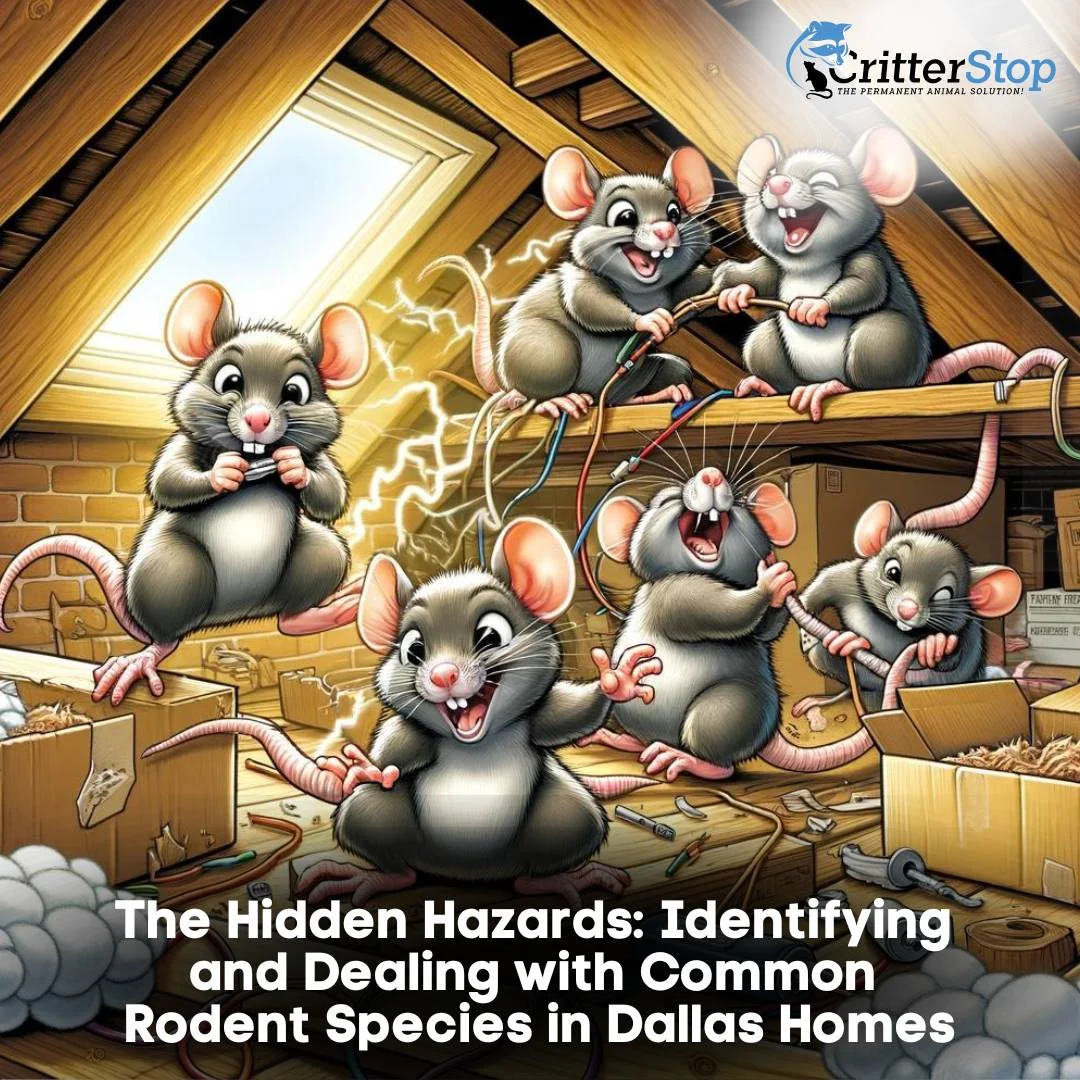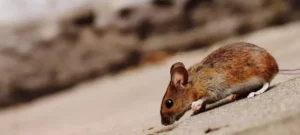
If you live in the Dallas area, it is important to be aware of the potential problems that can arise from rodent infestations in your home. These pesky creatures can cause extensive damage, pose health risks to you and your family, and multiply at an alarming rate. In this article, we will explore the common rodent species found in the Dallas area, understand their behavior, assess the damage they can cause, and discuss effective strategies for rodent control and prevention.
Identifying the presence of rodents in your home is the first step in dealing with the problem. Some of the common rodent species found in the Dallas area include:
When it comes to rodent infestations, it's important to know which species you're dealing with. Each species has its own unique characteristics and behaviors, which can help you determine the best course of action for removal and prevention.
House mice, one of the most common rodent species found in the Dallas area, are small creatures, usually measuring around 6-8 inches in length. They have a pointed snout and large ears, which aid in their keen sense of hearing. House mice can come in a variety of colors, including light brown, gray, or black.

Norway rats, another prevalent rodent species in the Dallas area, are larger than house mice, measuring about 9-11 inches in length. They have a more robust build and a blunt snout. Unlike house mice, Norway rats have relatively small ears in proportion to their body size. Their fur color ranges from brown to gray.
Roof rats, also known as black rats, are similar in size to Norway rats but have a longer and more slender body. They are agile climbers and have a prehensile tail that helps them maintain balance while scaling various surfaces. Roof rats are known for their ability to enter homes through trees or utility lines, making them a common nuisance in the Dallas area.
Each rodent species has its own unique behavior, which can impact the extent of the infestation and the methods used for control.
House mice, for example, are excellent climbers and can easily access various areas of your home. They can squeeze through small openings as tiny as a dime, making it crucial to seal any potential entry points to prevent their entry. House mice are also prolific breeders, with a single female capable of producing up to 35 offspring in a year.
Norway rats, on the other hand, prefer to burrow in the ground and create extensive tunnel systems. They are excellent diggers and can cause damage to foundations, gardens, and other outdoor structures. Norway rats are less agile climbers compared to house mice and roof rats, but they can still find their way into your home through gaps or openings in the foundation or walls.
Roof rats, as their name suggests, are skilled climbers and prefer to nest in elevated areas such as attics, rafters, or trees. They have a strong sense of balance and can navigate narrow ledges and wires with ease. Roof rats are known to be more cautious and wary of new objects or changes in their environment, which can make trapping or baiting them more challenging.
By understanding the behavior and characteristics of different rodent species, you can better tailor your rodent control efforts to effectively address the specific infestation in your Dallas home. Whether it's implementing preventive measures, setting traps, or seeking professional assistance, taking action promptly is essential to minimize the damage and health risks associated with rodent infestations.
Rodents are known for their rapid reproduction rate, making it critical to address any infestation promptly.
Understanding the reproduction rate of rodents is essential in effectively managing and controlling their population. These small mammals have evolved to reproduce at an astonishing pace, ensuring their survival in various environments. Let's delve deeper into the fascinating world of rodent reproduction.
A single pair of mice can produce over a hundred offspring in a year. This staggering number is due to their ability to reproduce every 20-30 days, with a gestation period of only 19-21 days. As soon as the female gives birth, she can become pregnant again within hours, leading to a continuous cycle of reproduction. It is estimated that a female mouse can have up to 5-10 litters in her lifetime, depending on various factors.

Similarly, Norway rats have a similar reproduction rate, with a female capable of having up to six litters in a year. Each litter consists of 6-12 pups, and the gestation period lasts for approximately 21 days. These rats reach sexual maturity at around three months of age, contributing to their rapid population growth.
Roof rats, another common rodent species, can produce up to five litters a year. Each litter contains around 6-8 pups, and the gestation period lasts for about 21-23 days. With their ability to reproduce quickly, these rats can establish large colonies in a short period, posing significant challenges for pest control professionals.
Several factors can influence the reproduction rate of rodents, making it essential to consider these factors when implementing control measures. The availability of food, water, and shelter plays a crucial role in determining the reproductive success of rodents. When resources are abundant, rodents can reproduce at a faster rate, ensuring the survival of their offspring.
Overcrowding is another factor that can accelerate rodent breeding. When a population exceeds the carrying capacity of its environment, competition for resources intensifies, triggering an increase in reproduction. This phenomenon is commonly observed in urban areas, where rodents find ample food sources and suitable nesting sites.
Favorable environmental conditions also contribute to the reproduction rate of rodents. Warmer temperatures and longer daylight hours stimulate their breeding behavior, leading to higher birth rates. Additionally, rodents have evolved to adapt to various climates, allowing them to reproduce year-round in many regions.
Understanding the factors that influence rodent reproduction is crucial in developing effective strategies for population control. By targeting these factors, such as reducing access to food and shelter, implementing proper waste management practices, and sealing entry points, it is possible to minimize the chances of infestation and mitigate the risks associated with rodent populations.

Rodents can wreak havoc on your property, causing significant damage that can be both costly and frustrating to deal with. From chewed furniture to damaged walls and electrical wiring, the consequences of a rodent infestation can be extensive.
When rodents invade your home, they don't discriminate when it comes to what they chew on. They can gnaw on almost anything they encounter, leaving behind a trail of destruction. Your favorite couch? It could become a rodent's chew toy. The walls that once provided a sturdy barrier? They may now bear the marks of rodent teeth. Even your electrical wiring isn't safe, as rodents have a penchant for nibbling on cables, potentially leading to electrical malfunctions and fire hazards.
But the damage doesn't stop there. Rodents are notorious carriers of diseases, posing a serious threat to your health and well-being. As they scurry around your home, they leave behind droppings and urine, which can contaminate your living spaces. These biological substances can harbor harmful bacteria and viruses, putting you and your family at risk of contracting illnesses. From hantavirus to salmonella, the list of diseases associated with rodent infestations is alarming.
Not only do rodents chew on almost anything they encounter, causing damage to furniture, walls, and electrical wiring, but they can also contaminate your food and spread diseases. Rodents can leave behind droppings and urine, which can pose serious health risks to you and your family.
When it comes to your food, rodents are relentless. They can easily access your pantry and feast on your stored goods, leaving behind their telltale signs of nibbled packaging and droppings. This not only results in wasted groceries but also exposes you to potential foodborne illnesses. From the pantry to the kitchen countertops, rodents can contaminate surfaces with their urine and feces, making food preparation a risky endeavor.
Furthermore, the damage caused by rodents can have financial implications. Repairing or replacing chewed furniture, walls, and electrical wiring can be costly. The expenses can quickly add up, leaving you with a hefty bill to restore your property to its former state.
There are several steps you can take to protect your home from rodent damage. Seal any cracks or openings in your home's foundation, walls, or roof. These small entry points can serve as an open invitation for rodents to enter your living spaces. By effectively sealing these gaps, you can create a barrier that deters rodents from infiltrating your home.
Keeping your living areas clean and free of clutter is another crucial aspect of rodent prevention. Rodents are attracted to food sources, so it's essential to eliminate any potential temptations. Regularly clean up crumbs, spills, and food debris, ensuring that your home remains unappealing to these unwanted guests.
Proper food storage is also key in rodent prevention. Store food in airtight containers that rodents cannot access. This includes not only pantry items but also pet food and birdseed. By denying rodents easy access to food, you decrease the likelihood of an infestation.
In conclusion, the damage caused by rodents can be extensive and costly. From chewing on furniture and walls to contaminating your food and spreading diseases, these pests can wreak havoc on your property and pose a threat to your well-being. Taking proactive measures to protect your home, such as sealing openings and practicing proper sanitation, is crucial in preventing rodent infestations and minimizing the potential damage they can cause.
Aside from property damage, rodents can also pose significant health risks, as they can carry and transmit various diseases.
Some of the diseases carried by rodents include Hantavirus, Salmonella, and Leptospirosis. These diseases can cause symptoms such as fever, nausea, vomiting, and in severe cases, can even be life-threatening.
To prevent the transmission of diseases, it is important to practice proper hygiene, such as washing hands thoroughly after handling items that may have come into contact with rodents. Additionally, keeping your home clean and free of rodent infestations is crucial.
Dealing with rodent infestations requires a proactive approach, combining various strategies to effectively remove and prevent their presence in your home.
1. Identify the entry points and seal them off to prevent further access.2. Set up traps or use baits to catch the rodents.3. Remove any sources of food and water that may attract rodents.4. Clean your home thoroughly, ensuring to properly dispose of any droppings or nesting materials.5. Regularly inspect your property for signs of rodent activity and take immediate action if necessary.
By following these steps and implementing regular preventive measures, you can effectively control and prevent rodent infestations in your home. Remember, early detection and prompt action are key to minimizing the damage and health risks associated with rodent species commonly found in Dallas homes.